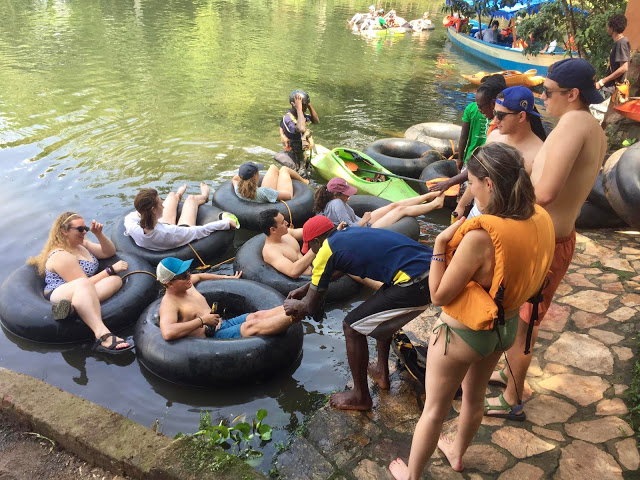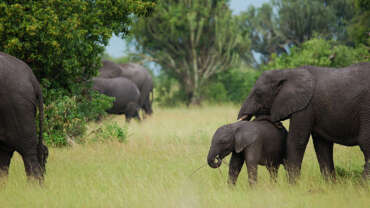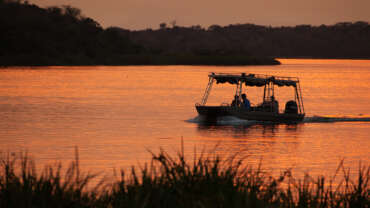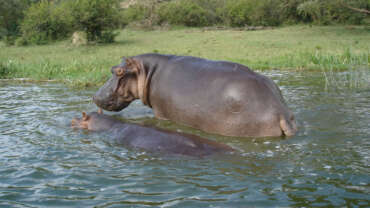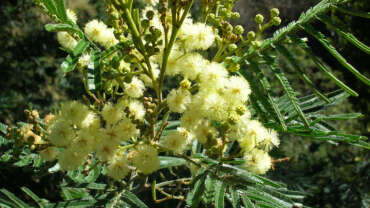Experiences in Uganda
Central Uganda Destinations
Kampala City
Kampala, the capital city of Uganda is located in the central region on the shores of Lake Victoria. The city has many attractions, destinations and tourists activities ranging from events to prime time venues and hotels, that’s why it’s referred to as the East Africa’s happiest city.
The city gets its name From Impala (Aepyceros melampus) a medium-sized African antelope that used to roam the jungles where Kampala seats today. Located just 40 Km from Entebbe International Airport, Kampala will amaze you with its beauty, culture and hospitality before you venture the rest of the country.
The city boasts of many attractions visitors warmly explore everytime they visit Uganda; including the National Museum, the famous Kasubi tombs, Kabaka’s Lake, Bulange Mengo, Kabaka’s palace (Lubiri, Mengo), the Uganda National Cultural Center, various religious centers like Bahai Temple, Kibuli & Gadaffi Mosques, Namirembe Cathedral, Rubaga Catholics Cathedral, Namugongo Martyrs’ Shrine, various shopping malls and night clubs.
Ssese Islands
The 84-forested island of the Ssese Group, float like green jewels on the waters of lake Victoria ,located 55km from Entebbe, these are one of Uganda’s greatest natural gifts waiting for you to be discovered. To all professional Entomologists Ssese Group of islands provides an earthly insect paradise. Guests are required to bring with them bird watching and fishing gears.
Namugongo Matyrs Shrine
About 15 km east of Kampala city lies the Namugongo martyrs’ shrine where more than 20 catholic and Anglican martyrs were burnt alive on the orders of Kabaka Mwanga in June 1886. Consequently, christians from eastern and central Africa and indeed the world over flock to Namugongo to pay their respects and renew their faith by paying pilgrimage to the martyrs on June 3rd, every year. A church was constructed in the shape of a traditional Baganda hut (akasiisiira) in memory of the martyrs. It stands on 22 copper pillars representing the 22 catholic martyrs. In front of the main entrance to the church, below the altar is the spot where Charles Lwanga, the leader of the Catholics was burnt on June 3rd 1886.The church was consecrated by Pope Paul VI on August 2nd, 1969.
Western Uganda Destinations
Kisiizi Falls
The Kisiizi Falls are located in Kisiizi Parish in Nyarushanje Sub County in Rukungiri District of Western Uganda. The falls drop approximately 30 meters off a cliff at Kisiizi on the Rushoma River that snakes its way to Lake Edward. Kisiizi has both historical and geographical significance.
Bwindi Forest
Bwindi Impenetrable Forest is located in Kabale/Kanungu Districts, South West of Uganda on the border with the Democratic Republic of Congo (DRC), covering an area of 321 sqkm. It is 530km from Kampala.
Bwindi Forest consists of a large primeval forest in East Africa, with altitudes spanning from 1,160 to 2,607 meters. The forest is at the edge of the western arm of the Great Rift Valley. Bwindi Forest was recognized by the United Nations Educational, Scientific and Cultural Organisation (UNESCO) as a World Heritage Site for being the home of half the world’s population of endangered Mountain Gorillas as well as being one of the most biologically diverse areas on earth.
Bwindi Impenetrable National Park, is part of Bwindi Impenetrable Forest, located Southwestern Uganda, covering an area of 331 sq Km of jungle forerst. It consists of 120 species of mammals, 346 bird species, 202 butterfly species, 163 tree species, 100 fern species, 27 frog species, as well as other many endangered species including chameleon, gecko to mention a few.
Kitagata Hot Springs
Kitagata is a vernacular for warmth, but because of the popularity of the place, the village and sub-country are called Kitagata. The place is dotted with small houses, some grass thatched, others roofed with corrugated iron sheets, which act as private rooms for patients to hire. The scene of people almost naked resting in water in a pond-like formation is the first to inform you that you have arrived at the healing place. Women and men of all ages seem to be enjoying the water in flowing from the two nearby springs. The water in the springs can warm up to 80 °C (176 °F).
One hot spring is famously known as Mulago while another is called Ekitagata kyomugabe, meaning the hot spring for the king of Ankole. Mulago is national referral hospital in Uganda, while Ankole is a sub region in Western Uganda.
People with ailments on the body dip that particular part in the water to get healed. If someone is having stomach problems, they draw the water directly from the burble source locally called Akaswonswo and let it cool to the temperature they can drink it.
It is indeed as busy as a hospital. As other patients come in, others go out, admitting themselves to the hospital and discharging themselves after treatment. Kabasekye says that they get around 800 visitors (patients) every week, people of all ages and from all corners of the country.
Lake Bunyonyi
Lake Bunyonyi is believed to be the second deepest lake in Africa with its deepest end approximately 900m. The lake is dotted with 29 islands. The most prominent of these include the Akampene Island also known as the punishment island, Bushara, Kyahugye, Bwama and Njuyeera, and Bucuranuka. Also the deepest lake in Uganda, home of Otters, crayfish and a place of many little birds in South-western Uganda lies between kisoro and kabale districts close to the border with Rwanda.
Northern Uganda Destinations
Kidepo National Park
Kidepo ranks among Africa’s finest wildernesses. From Apoka, in the heart of the national park, a savanna landscape extends in all directions, far beyond the gazetted area of 1442km2, towards horizons outlined by distant mountain ranges.
The park has a semi-arid climate with just one rainy season per year (April-September) and rainfall is light. The valley of the Narus river in the south of the park receives some 890mm of rain/year while just 635mm of rain/year falls in the Kidepo valley to the north. Both rivers are seasonal, and dwindle and disappear in the dry season. During these months, the only permanent water in the park is found in wetlands and remnant pools along the southern Narus valley near Apoka and as a result, wildlife is concentrated in this area. This consideration, combined with the valley’s open, savanna habitat, makes the park a prime game viewing location on a Uganda safari. Indeed it is possible to sight a good variety of wildlife simply by scanning the valley with binoculars from the comfort of the Apoka lodge.
The Murchison Falls
The Murchison Falls National Park lies at the northern end of the Albertine Rift Valley, where the bulky Bunyoro escarpment merges into the vast plains of Acholi land. One of Uganda’s oldest conservation areas, it was initially gazetted as a game reserve in 1926 to protect a savanna that Winston Churchill described in 1907 as ‘Kew Gardens and the zoo combined on an unlimited scale’.
The park is bisected by the Victoria Nile which first races down 80km of white-water rapids before plunging 40m over the remnant rift valley wall at Murchison Falls, the centre piece of the park. The Falls drains the last of the river’s energy, transforming it into a broad, placid stream that flows quietly across the rift valley floor for 55km to Lake Albert. This stretch of river provides one of Uganda’s most memorable wildlife spectacles on a Uganda safari. Regular visitors include elephant, giraffe and buffalo while hippopotamus and Nile crocodile are permanent residents.
Eastern Uganda Destinations
The Source Of The Nile
Flanked today by the city of Jinja, the waterfall described by Speke now lies submerged beneath the Owen Falls Dam, Uganda’s main source of hydro-electric power. Still, a visit to the source of the Nile remains a moving and wondrous experience, no less so to those who have seen the same river as it flows past the ancient Egyptian temples of Luxor some 6,000 km downstream.
The source of the Nile, alluded to hazily in the ancient writings of Ptolemy, stood as one of the great geographical mysteries of the Victorian Age.
Closer to home, the Nile downriver from Jinja offers some superb white water rafting and game fishing. Its crowning glory, however, is Murchison Falls, where the world’s longest river funnels through a narrow fissure in the Rift Escarpment to erupt out of the other side in a crashing 43 metres plume of white water. The river below the falls is no less spectacular in its own way, with its profuse birdlife, thousands of hippos, and outsized, gape-mouthed crocodiles.
Mt Elgon National Park
Mount Elgon is a popular destination for nature lovers providing an exclusive domain for backpackers with numerous birding trails. The extinct volcanic mountain is an important watershed supporting a rich variety of vegetation zones ranging from montane forest to high open moorland studded with the other worldly giant lobelia and groundsel plants. The recent development of the Forest Exploration Center at Kapchorwa allows birders access to extensive montane forest as well as the arid savanna around Moroto.



